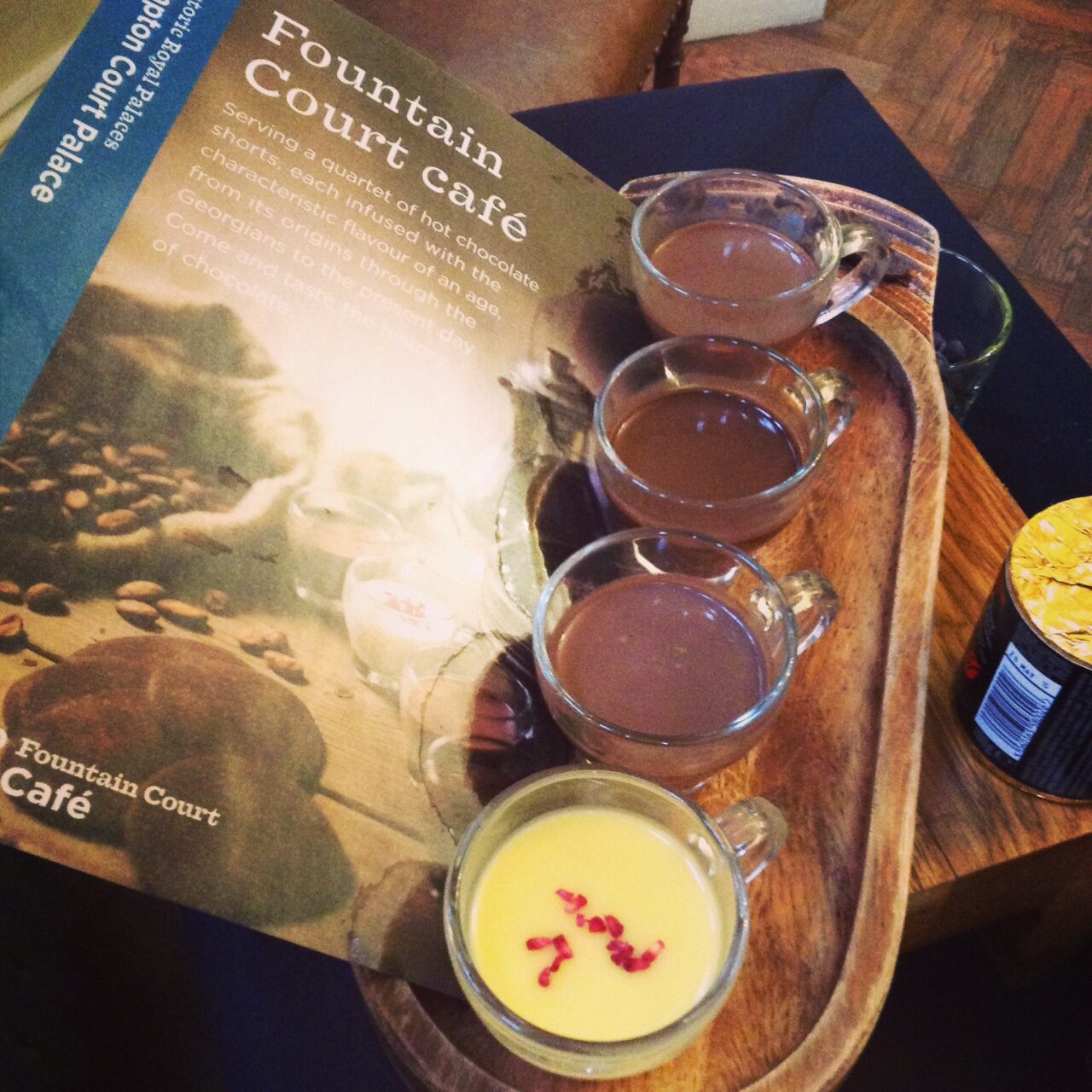Valentine’s Day saw the opening of a previously undiscovered set of rooms at Hampton Court Palace. For years these rooms had been used to store unused items, until one clever Curator put the pieces of the jigsaw together (with the help of some blueprints), and realised the rooms were used to make…Chocolate.
The lovely people at the HRP invited us along earlier in the week to take a sneak peak, and here is a round-up of 6 chocolate-y things we learnt:
1. COD: Chocolate On Demand
When the trend for cocoa swept our shores in the 17th Century, it didn’t take long to turn us into a nation of chocolate lovers. However, chocolate was pricey stuff. Instead of sending a man out to London to gather supplies, which is what a ‘thrifty’ monarch should’ve done, King George I had other plans. He had his own chocolate maker, kitchen AND room installed in Fountain Court at Hampton Court Palace, right next to the Confectionery and Spicery I should add, so he could have access to chocolate 24/7.
Talk about an addict right? But in reality it was a demonstration of his status, as only a Monarch could afford such opulent luxury.

Source: HRP
2. A Star is Born
The Chocolate Kitchen was a family affair, managed by Thomas Tosier and his wife Grace. Thomas was great and all, but the real star of the show was Grace. She was the front woman and even had her own Chocolate House in Greenwich, which was the hotspot for the rich and famous (an upmarket coffee shop in you will). Descriptions of her tell us that she wore a large brimmed hat and flowers in her bosom. What a woman.
When poor Thomas died and Grace remarried, she kept the Tosier name. She was a business woman after all and knew that the Tosier brand made her money!
3. The Kings Back Passage
If King George woke up with an insatiable appetite for chocolate he didn’t want to wait. Therefore he instilled a special passage just for Thomas to make a quick delivery of the good stuff to his rooms. But I suppose, if you can’t make a chocolate passage when you’re King, when can you?

Source: HRP
4. Recreate the Tastes (not smells) of 1652
Chocolate making was a laborious task, which involved hours of grinding cocoa beans so the chocolate was perfectly smooth. If you do fancy trying it out for yourself why not have a go at this recipe from 1652? Looks easy…
Chocolate or An Indian Drinke; Colmenero 1652
To every 100. Cacaos, you must put two cods of the long red Pepper, of
which I have spoken before, and are called in the Indian Tongue,
Chilparlagua; and in stead of those of the Indies, you may take those of
Spaine which are broadest, & least hot. One handfull of Annis-seed
Orejuelas, which are otherwise called Pinacaxlidos: and two of the flowers,
called Mechasuchil, if the Belly be bound. But in stead of this, in Spaine, we
put in six Roses of Alexandria beat to Powder: One Cod of Campeche, or
Logwood: Two Drams of Cinamon; Almons, and Hasle-Nuts, of each one
Dozen: Of white Sugar, halfe a pound: of Achiote enough to give it the
colour. And if you cannot have those things, which come from the Indies,
you may make it with the rest.
5. A Perfect Restoration
HRP have taken great care to restore the rooms to their former glory. They have paid meticulous detail to ensuring all the fittings, and even Chocolate Mugs, are as in as much the same place and style as their would’ve been in the back in the day. The glasses in the Chocolate room are based on examples found in the V&A museum and the mug handles are based on those excavated from Hampton Court Palace itself. The rooms and their contents really are a homage to great British craftsmanship.
6. The Flights of Fancy
After we had a good nosy around, we were give ‘flights’ of chocolate to sample. The ‘flights’ included four chocolate drinks based on recipes from the 1600’s and the Georgian & Victorian periods, and an extra special recipe from the present day. The good news is you can buy these at the Fountain Court Café for a mere £3.95, and they are seriously good.

Source: WorldChocolateGuide